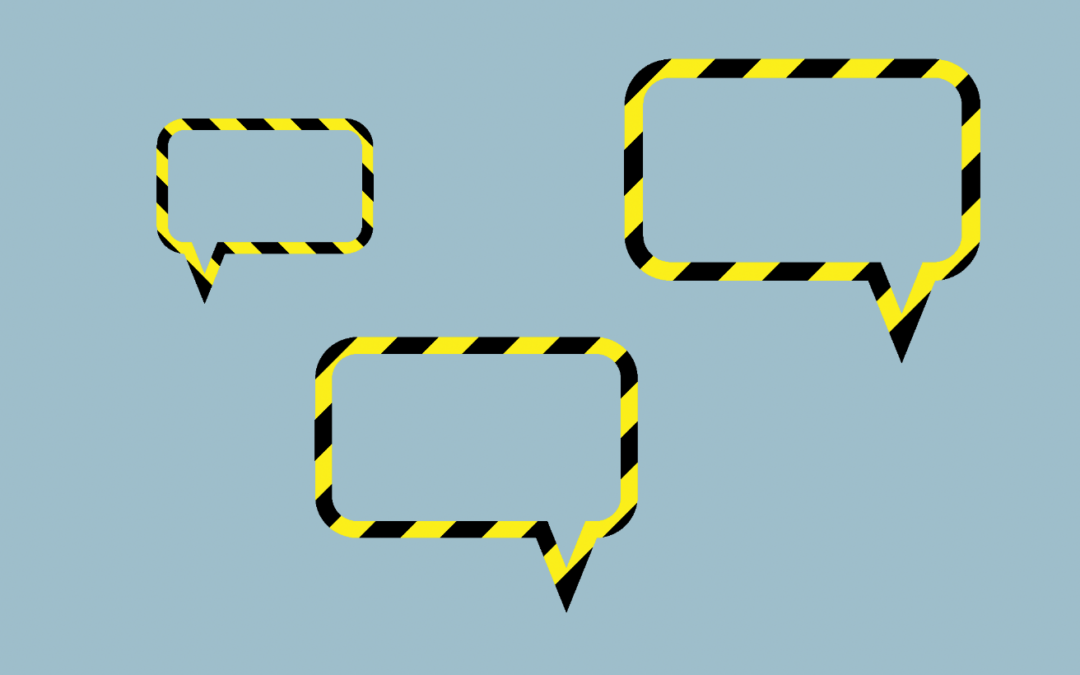When thinking of new toolbox talk ideas, we’ve all sat there scratching our heads. Over time, toolbox talks can become tedious, messages become stale and it’s easy to run out of topics.
So if you’re looking to freshen things up and try some unique topics, check out our list below. Or you’re new to holding toolbox talks and want to try the fundamental topics first, take a look at our list here.
And remember, toolbox talks need to be conversations, not presentations. So make sure you engage your team, and get their feedback and input. It’s likely they’ll give you a tonne of toolbox talk ideas too.
1. Asking for Help
No matter what you’re doing, asking for help is always okay. Poor support can become a serious hazard at work when it’s severe, prolonged, or frequent. In this toolbox talk, you can talk about the importance of stopping a job and asking for advice or help when they need a hand. It’s also important to encourage your team to share their knowledge and offer help if someone needs it. Building a team culture in which people can rely on each other keeps people safe. A delay in getting something done is better than someone taking an unnecessary risk.
2. Work-Related Stress
Black Dog has highlighted several workplace factors that increase workers’ experiences of stress and increase the risk of workers developing mental illness. All jobs have an element of stress, however, it’s important that your team feels comfortable asking for support if stress becomes too much. This toolbox talk provides a great opportunity to raise your team’s awareness about work-related stress and provide them with information about what processes and support are available if they are experiencing work-related stress.
RELATED: Psychosocial Hazards – Examples, Legalities and How to Manage Them
3. 10 Most Common Safety Mistakes
This toolbox talk can focus on the 10 most common safety mistakes within your team, site or industry. Talking about common safety mistakes can provide a spotlight on those reoccurring safety concerns, bringing them to your team’s attention. This is a great opportunity to discuss ways you can prevent these mistakes from reoccurring. Safework Australia reports having open safety discussions and involving workers in those discussions can help them to make better decisions, reduce workplace incidents and develop a positive health and safety culture.
4. Stretches
There is always a risk of physical injury with both physically demanding and sedentary jobs. But did you know that body stressing (strains and sprains, back or neck injuries, and tendonitis) is the highest contributor to workplace injury in Australia.
Stretching is a simple, yet effective way to protect your team from injury as it warms up your muscles and helps prevent sprains, strains and musculoskeletal disorders. In this toolbox talk, you could demonstrate some basic stretches and get your team involved, get them to follow along and share any stretches they find helpful to get warmed up.
RELATED: 6 Ways to Reduce Work-Related Musculoskeletal Disorders (WMSDs)
5. The Benefits of Positive Thinking
A positive attitude is a state of mind that can help people in every aspect of their lives such as relationships, inner peace, health, and success. Countless research has shown a positive mindset can contribute to your team’s decision-making, productivity, and safety onsite.
Use this opportunity to talk about the benefits of having a positive attitude, and ask your team to share experiences of when a positive mindset helped them at work.
6. Snakes
In Australia, there are approximately 3000 snakebites every year. When it starts heating up, you need to be mindful of snakes, especially working in remote areas. Remind your team to be aware of snakes (particularly if they can hide under gear or buildings), and explain what to do in if someone is bitten, as this can be the difference between life and death.
7. Awareness on the Job
A third of Aussies admit to getting distracted by their phones and social media. In this toolbox talk, you can speak to your team about awareness and focusing on the job at hand. If someone feels distracted or needs to take a step back from a job, encourage them to do so. Create a team discussion about how being distracted can negatively impact a job, and share techniques that can improve focus.
8. Reporting Minor Injuries
Small injuries such as small cuts or blisters can go unreported because workers don’t feel they are serious enough to stop work and report them. However, small injuries can lead to bigger injuries; for example, an unreported and untreated small cut or blister can become infected and lead to a person requiring medication and time off work. This conflates reporting and treatment.
Aside from receiving proper treatment, workers have an obligation to report injuries in the workplace to satisfy their duties. In this toolbox talk, you can share examples like the one above, go over the reporting process and reinforce the importance of reporting minor injuries.
Minor cuts can also be a result of near misses, which are vital to report. We dive into this more in our How to Show Due Diligence in WHS article. This brings us to our next toolbox talk idea…
9. Near Misses
Research has shown that regular communication about near misses supports a reduction in injury frequency. This can highlight situations or specific activities where your team needs to ensure they have followed safety protocols and procedures to avoid near misses. In this toolbox talk, ask your team to discuss:
- possible near misses that could arise in their role
- additional controls or job steps (if required)
- proactive ways they can avoid those near misses reoccurring altogether.
10. Proactive Versus Reactive Safety Approaches
Addressing and eliminating hazards before work begins should be a main goal of any company’s safety program, although when teams are busy and there’s a lot going on, safety can be forgotten.
In this toolbox talk, highlight the importance of having a proactive approach to safety, rather than a reactive approach. Ask your team for their own examples of being either proactive or reactive, and how this impacted on a task and their safety, either at work or at home. Try sharing a personal experience if others are shy to get the ball rolling.
This allows your team to learn from one another and consider how their approach to safety influenced outcomes in different contexts and situations.
11. Human Error
We all make mistakes. But in high-risk environments, human error can create catastrophic events. Talk to your team about the importance of situational awareness and following safety systems to reduce the impact of human error. This is a good time to reinforce topics we’ve already discussed, e.g. being mindful, remaining focused, asking for help and stopping a job if they aren’t in the right headspace.
12. Caffeine
McCrindle and Jura found three in four Aussies enjoy at least one cup of coffee per day, and of those, 28% have over three. When you add in energy drinks, tea, fizzy drinks and chocolate into the mix, caffeine intake can tip over the 400mg daily recommended limited.
In this toolbox talk, you can discuss:
- The health impacts of too much caffeine with your team, including dehydration, anxiety, insomnia, and digestive issues.
- How many caffeine milligrams are in different sources.
- Different activities and strategies to feel energised, such as exercise.
Too much caffeine can also wreak havoc on your sleep cycle, which brings us nicely to the next topic…
13. Sleep
A whopping 40% of Australians are struggling to sleep for 7-9 hours, and 20% have fallen asleep behind the wheel.
Sleep deprivation and fatigue can significantly reduce a person’s reaction time, motor control, decision-making ability, and situational awareness, making it a serious safety concern on site.
Provide your team with tips for getting a good night’s sleep – such as creating a sleep routine and reducing exposure to light before bed. It’s a good opportunity to discuss what your team should do if they are feeling sleep deprived at work, and even more important if your site operates on shift work.
14. Time
Allocating the right amount of time to a specific job or task is important to ensure that workers don’t feel pressure to do a job unsafely. In this toolbox talk you can discuss time management with your team, and how to manage time pressures.
It’s important that your team feels supported to ask for help when handling a deadline, or if the job timeline needs to be adjusted to ensure everyone’s safety.
15. Positive Communication
It may seem straightforward, but another worthy toolbox talk idea is positive communication. Poor communication has contributed to several serious workplace incidents. Reinforce the importance of clear and concise communication, and give your team opportunities to discuss their communication and identify any ways they can improve. This is also a good time to check communication equipment is in good working condition such as two-way radios.
16. Anger Management
We’ve all had ‘one of those days’. Whether it’s technology, a colleague, or the ‘easy-to-use’ printer, there are many things that can test our patience in a typical working day. Anger can easily impact the company culture, team and individuals’ focus, productivity, and physical and mental health.
A recent WorkSafe survey showed that one in three workers have experienced workplace violence and aggression. In this toolbox talk, it’s important to acknowledge that everyone can feel frustrated and angry, but it’s essential that your team is able to (calmly) share their frustration with their teammates and work through those points of frustration to manage those negative feelings.
17. Horseplay
We all love a bit of harmless banter and the odd prank at work, but it’s important that your team understands the boundaries when it comes to horseplay. If your team is a playful bunch, emphasise the importance of picking and choosing appropriate times and ensure it never endangers anyone. This toolbox talk idea is also the perfect segue for ensuring your team understands when banter turns into bullying. Most Australians (60%) will experience some form of workplace bullying during their career, so make sure it’s not on your watch.
18. Creating a Positive Work Environment
Workplace bullying overlaps with the broader topic of creating a positive work environment. When we treat one another with respect and solve problems as a team, it can contribute to a safer, more cooperative workplace. Everyone has a responsibility to create a positive environment, so ask your colleagues to name some benefits, and what they feel could improve their experience.
19. Housekeeping
Housekeeping is a step in almost every job scope and for good reason. There are many scenarios in which simple housekeeping can save someone from getting injured, particularly from easily prevented incidents like a trip, slip or fall, which were the cause of 23% of workplace injuries in Australia, in 2021. In this toolbox talk, emphasise the importance of good housekeeping, explain how everyone on site has a responsibility to ensure that work areas are kept organised and safe, and have your team identify any work areas in which they can improve.
20. Complacency
One of the most tragic causes of injury and death on site is complacency, particularly for teammates who have been working in their respective roles or industries for a long time. We can all become complacent when we are familiar with a process, our surroundings, or a piece of equipment. Take this opportunity to speak to your team about basic safety protocols, and have them share simple things they do every day that contribute to their ongoing safety.
We hope these topics have sparked some ideas for your next talk. If you need someone to hold toolbox talks for you, get in touch to learn about our WHS consulting, labour hire and training services.


